News updates and blogs regarding Open Data Pakistan
Blog
21 blogs
No Blog Found
Disabilities Among Adult Men and Women in Pakistan
This blog aims to investigate the percentage of de facto female and male household members aged 15 and up who have difficulty functioning in one or more than one domain based on their background characteristics. The data for this article was obtained by Open Data Pakistan from the Pakistan Bureau of Statistics (PBS) 2019. The figures below show that, regardless of the type of disability, a...
Escalating Rape Cases in Punjab: Action Needed Now
Since 2009, Punjab has experienced a rise in the number of reported rape incidents. Bear in mind that these numbers may not accurately reflect the actual number of victims because many rape victims choose not to report rape due to a variety of reasons, such as social stigma, victim-blaming, a misogynistic culture (which places victims at the forefront of judgment and slut-shaming), threats from...
Intimate Partner Violence in Pakistan
Intimate partner violence is defined as any behavior that causes physical, emotional, psychological, or sexual harm to individuals involved in a relationship. Analyzing the current state of intimate partner violence (IPV) in Pakistan is crucial since it can lead to long-term consequences such as physical disability and even death. Furthermore, IPV has a significant effect on the victim's...
Temperature Trends Over Time in Pakistan
Why care about temperature? Temperature is an important statistic for understanding climate. Temperature variations in specific regions can have significant repercussions for both humans and the ecosystem. Higher temperatures can lead to severe weather events like heatwaves, storms, and floods. They may also deplete water resources in certain areas, worsening drought conditions....
Maternal Factors in Child Stunting in Pakistan:...
What is stunting? Stunting is a condition in which inadequate nutrition, recurrent infections, and a lack of psychosocial stimulation impede children's growth and development. Stunted children have a height-for-age greater than two standard deviations below the World Health Organization's child growth guidelines average. Why care about stunting in children? Exploring the impact of...
Transportation
Transportation is an essential part of modern life. Whether it's commuting to work, travelling to a different city, or just running errands, transportation is the backbone of our daily routine. This infographic provides valuable insights into the transportation habits and preferences of people in different parts of the world. One of the most striking observations from this infographic is the...
Electricity Inflation
The provided link leads to an informative chart or infographic that provides insights into the energy consumption patterns in the United States. The chart is well-designed and visually appealing, with color-coding and interactive features that make it easy to navigate and understand. The chart is divided into four main sections, including Electricity Generation, Transportation, Residential, and...
Status of Drinking Water in Households
Status of Drinking Water in Households PSLM/HIES 2018-19 The 2018-19 Pakistan Social and Living Standards Measurement Survey/Household Integrated Economic Survey (PSLM/HIES) collects vital information on the availability and consumption of drinking water available for households. Data on important indicators such as the main source of drinking water, the distance and time...
Status of Childhood Immunization in Pakistan
Status of Childhood Immunization in Pakistan (PSLM 2019-20 District Survey) One of the sections of the 2019-20 district level Pakistan Social and Living Standards Measurement Survey (PSLM) provides information on the immunization status of children as this is one of the most feasible and cost-effective ways to reduce infant and child morbidity and mortality. In 1978, the Government of...
Child Labour at Brick Kilns (Punjab)
Child labour is a menace to humanity that needs to be cured. Unfortunately, according to the Global Slavery Index 2013, Pakistan is ranked third among the countries that experience the worst forms of child labour. Children are forced to work in miserable conditions and are subjected to emotional and physical abuse. The severest form of child exploitation and forced labour is prevalent in the...
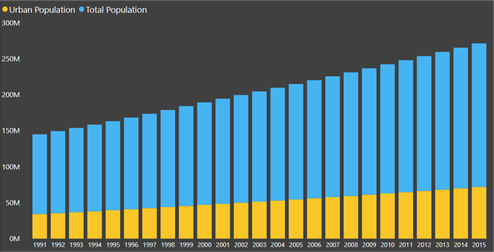
Investigating Climate Change
Our story starts from 1991 where the total population of Pakistan was around 111 million and jumped to199 million in 2015 with an alarming 80.02 % increase. The rural-urban population division shows the urban population jumped to an even higher of 110.39 % increase showing many people shifted from rural to urban areas due to industrialization and increased opportunities. ...
Reported Cases of Honour Killing- Punjab
According to Section. 299 of Pakistan Penal Code, 1860, Honour Killing is defined as "Offence committed in the name or on the pretext of honour means an offence committed in the name or on the pretext of Karo Kari, Siyah Kari or similar other customs or practices". Pakistan has the highest figures for estimated and reported honour killings per capita globally. Out of every 5000 honour...
Tuberculosis in Pakistan
According to the World Health Organization, Pakistan is ranked 5th among B High Burden Countries around the globe. In the Eastern Mediterranean Region Pakistan accounts for around 61% of the total TB cases registered. Globally Pakistan is ranked fourth in the prevalence of multidrug-resistant TB (MDR-TB), with approximately 27,000 drug-resistant TB cases emerging each year. The social construct...

Mukhbir: Real-Time Anonymous Crime Reporting
Mukhbir is an urdu word which means a secret agent, in terms of security agencies, Mukhbir is an unsung hidden hero who is always there to provide the most crucial information to the authorities to solve the happening of the crimes. Law and order is a crucial characteristic of progressive, civilized societies. It is a fundamental responsibility of the government to provide a safe and orderly...

AQI and COVID-19: Evidence
In a report by the World Health Organization (WHO), it has been recognised that "people of any age who have serious underlying medical conditions are at higher risk to get critically sick from the Covid-19 virus". People who have cardiovascular diseases, chronic respiratory diseases like asthma and those who have weak immune systems due to smoking are at a greater risk when infected...
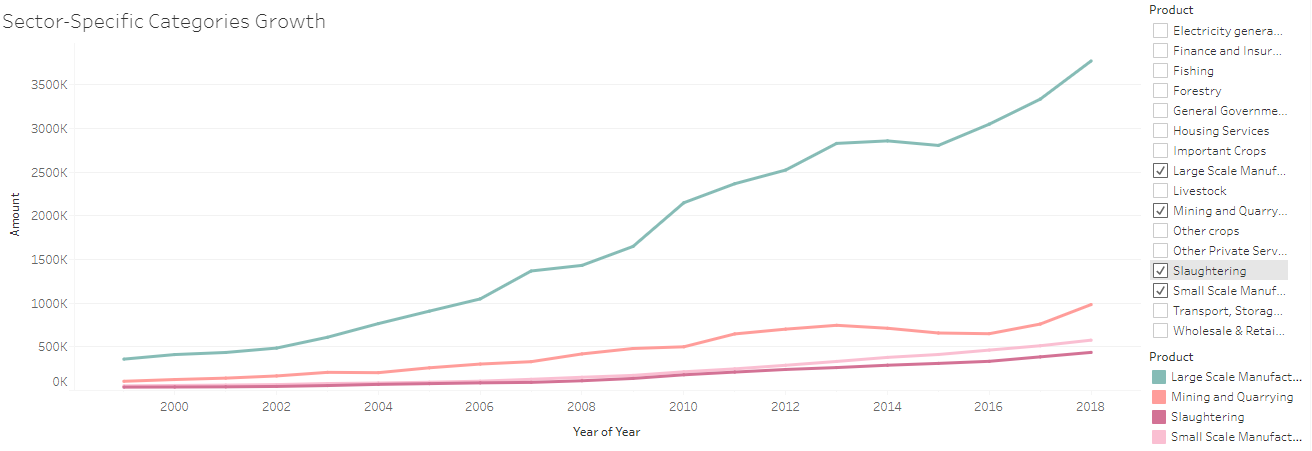
Large Scale Industries
Pakistan has been facing a financial crises since its independence and while there may be many other reasons, political crisis has always been a major one. The PTI government at the moment is facing a trade deficit and this may be attributed to certain decisions that were taken by previous governments. Before 1970s, Pakistan’s private sector was booming and companies’s profatibility...

Bureaucrats Employed by Grade & Gender
Gender discrimination is a bitter truth of the country we live in. Women are deprived of equal opportunities throughout the social and economic sectors of Pakistan. It is sad to note that Pakistan is reported the second lowest in the overall measure of gender biases in World Economic Forum’s Global Gender Gap Report of 2013. Pakistan’s bureaucracy is also tainted with this dark...
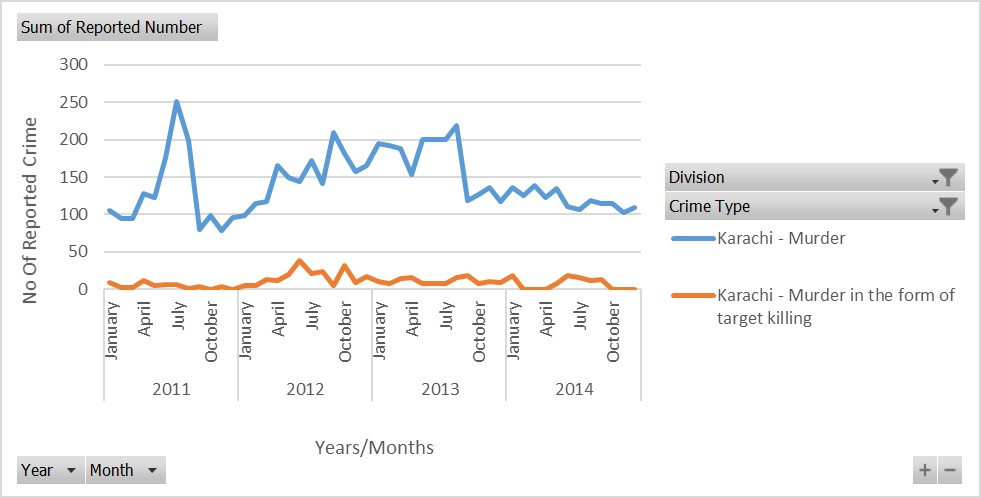
Crime Statistics
Deterring and punishing crime is one of the fundamental responsibilities of a state. Rising crime and deteriorating public safety can discourage investment and business activity, damage property, and reduce the quality of life, forcing people to live in fear and unease. In Pakistan in the period leading to 2013, crime was on the rise, due to a variety of socio-political factors combined with an...
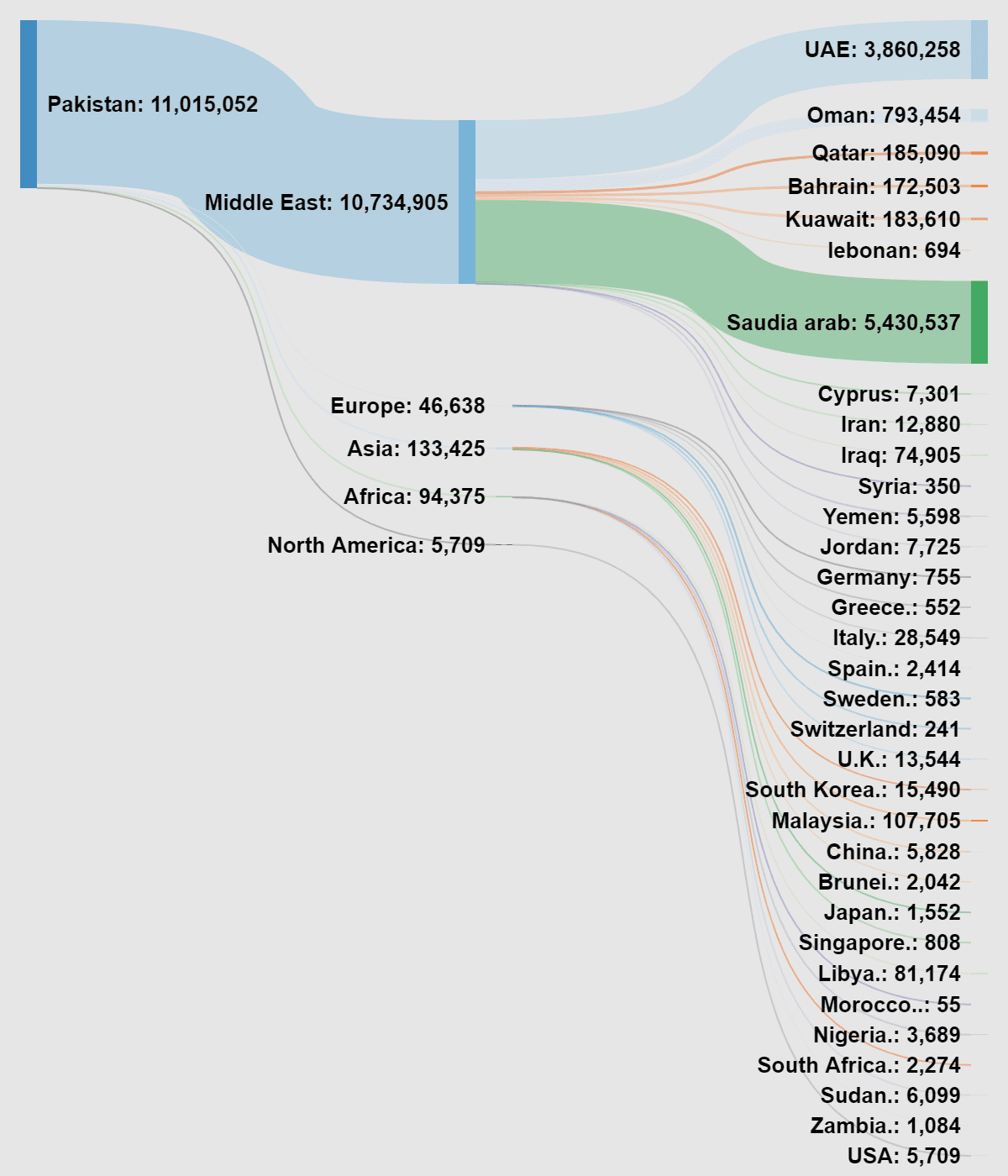
Brain Drain in Pakistan
Over the last two to three decades, the number of highly qualified and highly trained manpower from Pakistan has been moving. This number has been increasing rapidly due to a number of factors. Our analysis seems to focus concisely on the push and pull factors and by combining the two what actually leads to such a huge pool of people leaving their home country. Although, Pakistan enjoys the...
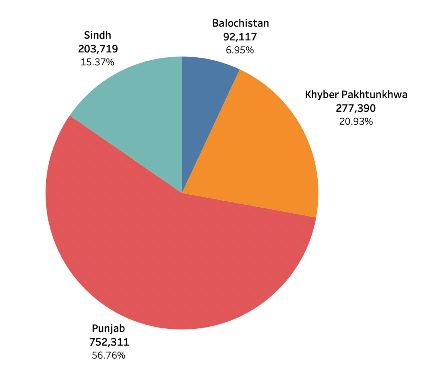
Public Development Budget Allocation
The data has been collected from the development statistics of each province. It looks at the provincial budgets for the main provinces of Pakistan: Punjab, Sindh, Khyber Pakhtunkhwa, and Balochistan, from 2002 till 2019. However, for some years, the data was missing from the website. Therefore, the available data is from 2002 till 2017 for Punjab, 2008 to 2017 for Sindh, 2013 to 2019 for KPK,...
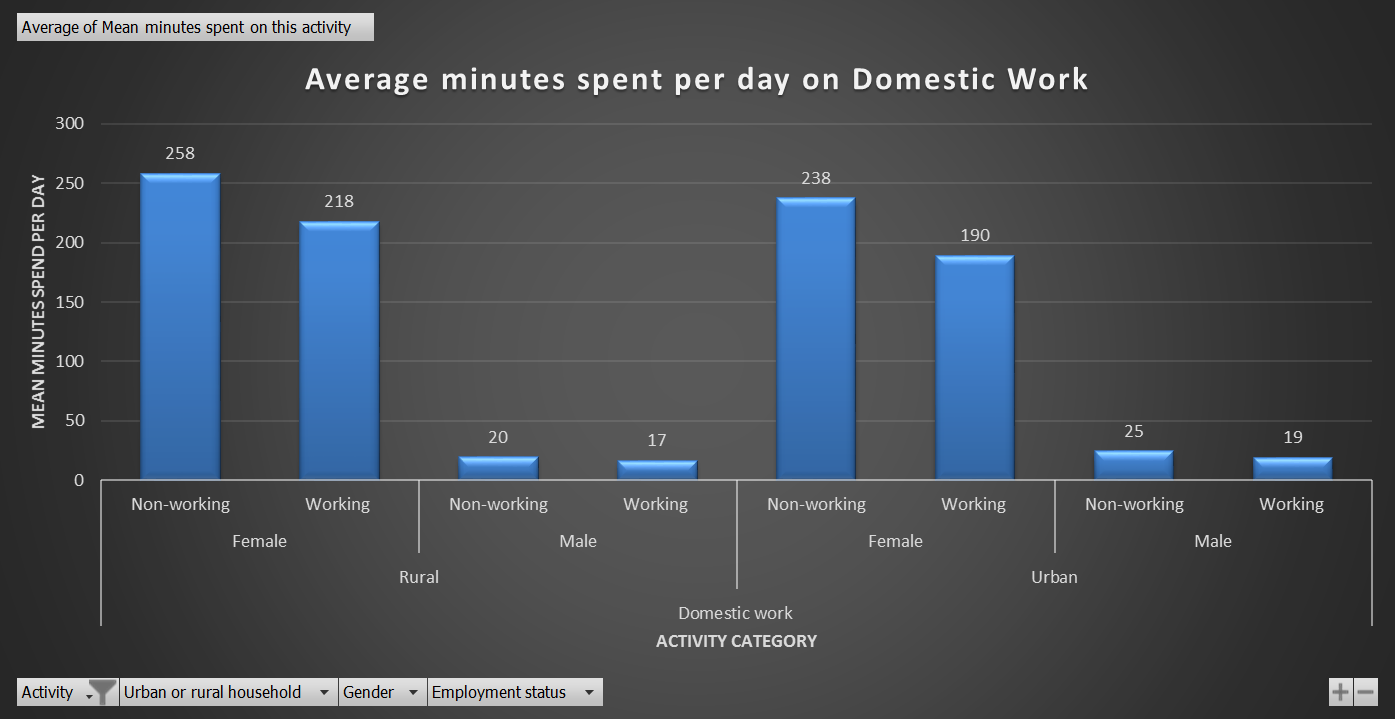
Time Use Survey
From our results, we see that females who live in rural areas of the country and are unemployed spend on average 258 minutes per day doing domestic work – more than any other observed category in our analysis. The minimum amount of time spent doing domestic work (17 minutes) is of employed males living in the rural areas. Our results show that females, irrespective of their employment...